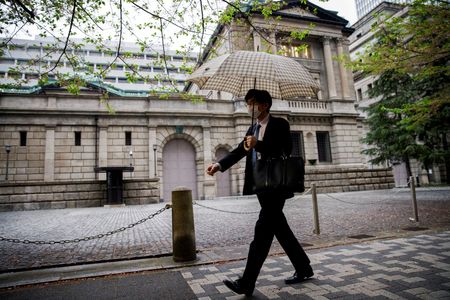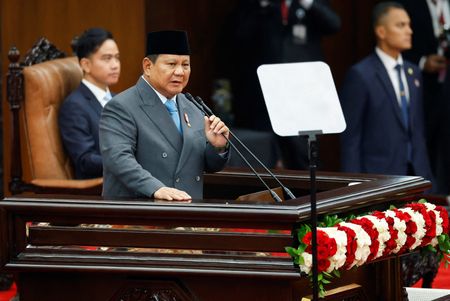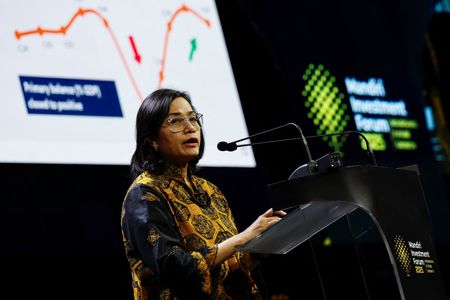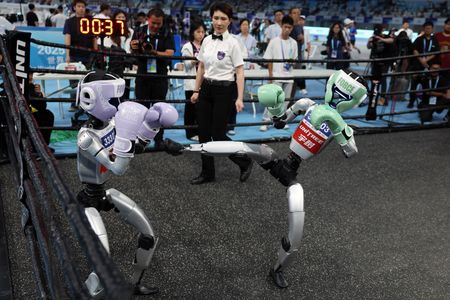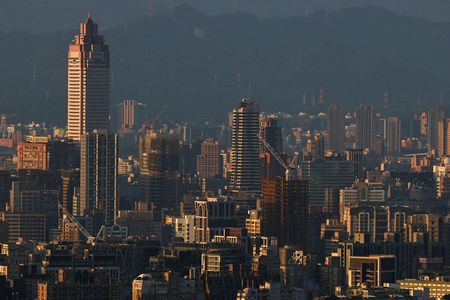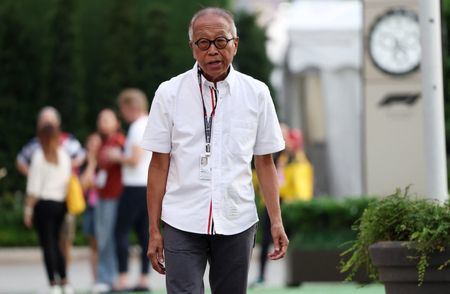By Leika Kihara
TOKYO (Reuters) -It’s Japan’s version of the Fed’s Jackson Hole symposium, without the trail hikes or views, and this year’s gathering of global central bankers in Tokyo will focus on two uncomfortable realities: flagging economic growth and sticky inflation.
The Bank of Japan and its affiliated think tank host a two-day annual conference that kicks off on Tuesday and includes prominent U.S., European and Asian academics and central bankers.
While most of the speeches are academic in nature and closed to media, this year’s theme looks at “New challenges for monetary policy”, specifically how central banks should deal with persistent inflation, downside economic risks, volatile markets and U.S. tariffs.
Those conflicting headwinds, much of it a result of U.S. President Donald Trump’s policies, are creating speedbumps for many central banks, regardless of whether they are raising and cutting interest rates.
The BOJ, for example, remains on track to continue raising interest rates and steadily taper its bond purchases, a stark contrast to its rate cutting peers, but recent global developments have raised questions about the pace of such moves.
“While the BOJ may be forced to stand pat for a while, it doesn’t need to ditch rate hikes altogether,” said former BOJ official Nobuyasu Atago. “It just needs to communicate in a way that when the environment looks right, it can resume rate hikes.”
Officials from the Federal Reserve, including New York Fed President John Williams, European Central Bank, Bank of Canada and Reserve Bank of Australia are among participants of the conference, which takes place at the BOJ’s headquarters in central Tokyo.
At last year’s meeting, participants took stock of their experience battling economic downturns by discussing lessons learned from using various unconventional monetary easing tools.
They also discussed whether Japan – an outlier that kept interest rates ultra-low even as other major central banks hiked aggressively – could emerge from decades of deflation and low inflation with budding signs of sustained wage hikes.
While concerns this year centre on tariff-induced economic downturns, the conference’s session topics indicate policymakers still sensitive to risks of being caught with persistent, too-high inflation.
One session features “reserve demand, interest rate control, and quantitative tightening.” Another will debate a paper published by the International Monetary Fund (IMF) in December titled “Monetary Policy and Inflation Scares.”
That paper explains how large supply shocks, such as one caused by the COVID pandemic, can lead to persistent inflation, warning of the dangers central banks face assuming that they can look through cost-push price pressures.
ERRATIC POLICY
That could be a compelling message for major central banks that face a similar dilemma exacerbated by a global trade war and Trump’s erratic trade policy.
Initially thought to be on course for more rate cuts, the U.S. Federal Reserve has been forced into a waiting game with officials warning last week of creeping inflation due to tariffs.
While the European Central Bank is expected to cut rates again in June, the case is growing for a pause beyond that as inflation challenges creep up on the horizon, according to Reuters’ conversations with policymakers.
“Tariffs may be disinflationary in the short run but pose upside risks over the medium term,” ECB board member Isabel Schnabel, an outspoken policy hawk, told a conference at Stanford University on May 9, in an explicit call for a pause.
The BOJ, too, faces the challenge of balancing domestic inflationary pressure and growth risks from U.S. tariffs.
Trump tariffs forced the BOJ to sharply cut its growth forecasts on May 1, signaling a pause in its rate-hike cycle that still leaves short-term interest rates at a meagre 0.5%.
And yet, Governor Kazuo Ueda has signaled readiness to resume rate hikes if underlying inflation stays on course to durably hit its 2% target.
Japan’s core consumer inflation hit a more than two-year high of 3.5% in April as food prices surged 7% in a sign of the pain rising living costs are inflicting on households.
“It’s clear the BOJ has failed to achieve its mandate of price stability,” said Atago, who is currently chief economist at Rakuten Securities Economic Research Institute.
“Inflation will always be among worries for the BOJ, which is probably already behind the curve in dealing with domestic price pressures.”
Ueda delivers a keynote speech at the outset of the conference on Tuesday, followed by a lecture by Agustin Carstens, general manager of the Bank for International Settlements (BIS).
(Reporting by Leika Kihara; Editing by Sam Holmes)

